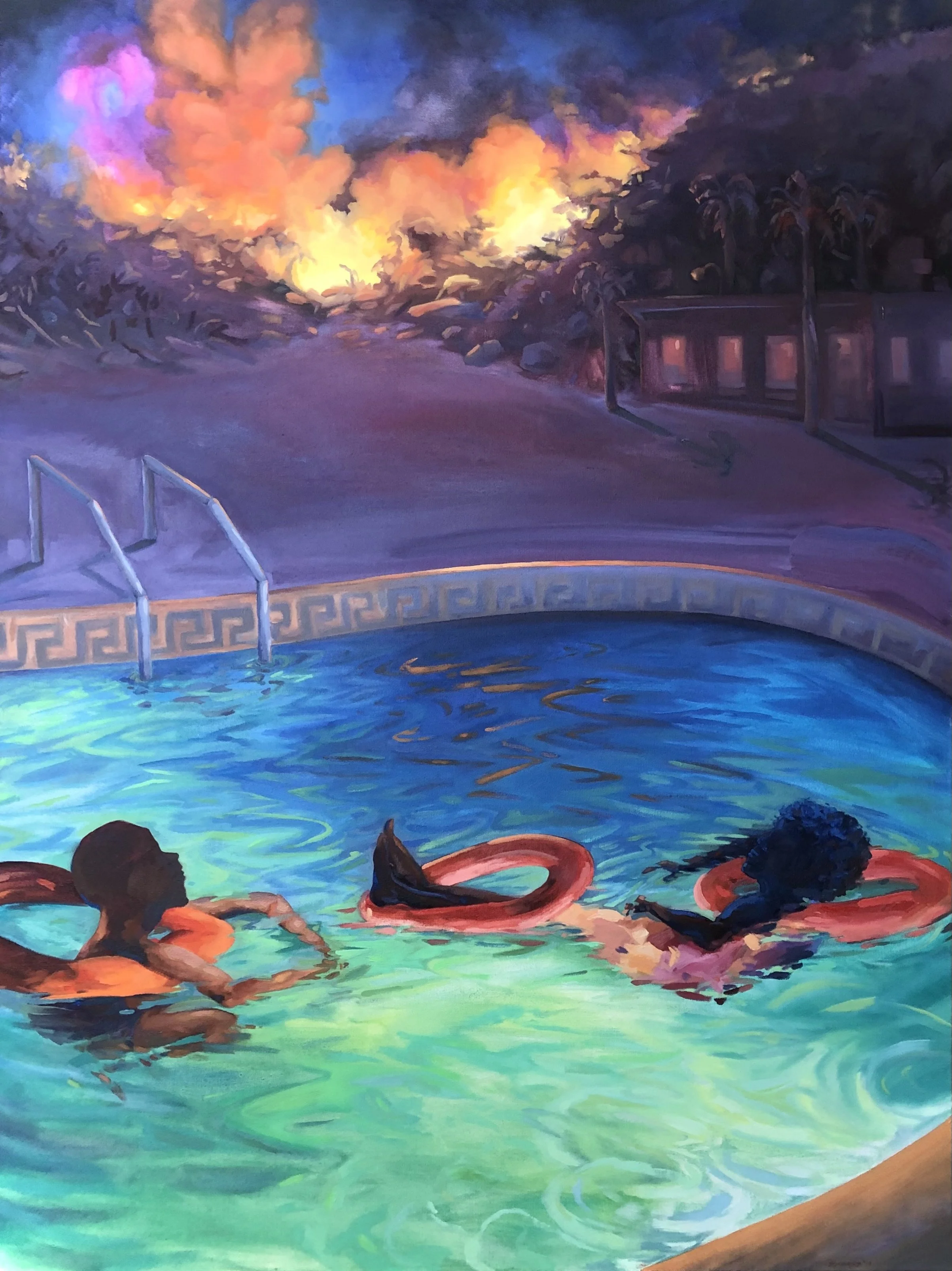Elizabeth Sampson
Elizabeth Sampson is a multidisciplinary artist whose work addresses vulnerable public landscapes threatened by climate change. Her narrative paintings depict the overlapping edges of wilderness and urban landscapes, places that may otherwise go unnoticed. Her vibrant, high contrasting color palette often exaggerates the tenseness of these areas.
Particularly drawn to the light and colors of the desert, Elizabeth has traveled throughout the North American west, using oils or watercolors to document these landscapes. These plein air paintings are then utilized as references in her studio for the larger narrative paintings.
She has exhibited in the US and abroad, including in Costa Rica, Canada, and South Africa.
My artwork explores the transformative shifts within landscapes, particularly those influenced by the climate crisis, and examines the intricate interplay between humans and environments teetering on the edge of change. I am drawn to the way that living beings navigate and adapt to climate-vulnerable landscapes; specifically how resilience manifests in response to degrading habitats. My work bridges the gap between present reality and an imagined future, capturing the narratives that emerge.
My narratives invite viewers to ask questions about our methods of interaction with climate-vulnerable places. It is as much a reflection of my own experiences as of those we all imagine and fear. My recent body of work explores unstable environments through fictional situations. My driving questions are “How do we navigate a shifting landscape?” & “At what point do environments fall apart?”
My art practice begins with working en plein air. Through direct observation, I work to distill the colors and textures of the landscape, while learning about the social and historical background of a site through research and conversations. Painting en plein air instructs my compositional choices, as it warrants the natural world to inform my color palette, my content, and my narratives, while also informing my understanding of place. From there I create narratives in the studio which reflect a driving question or emotion, with the goal of sparking conversations and (re)actions.

